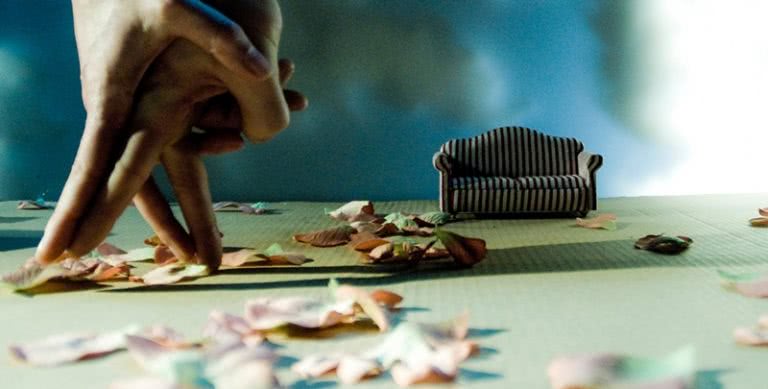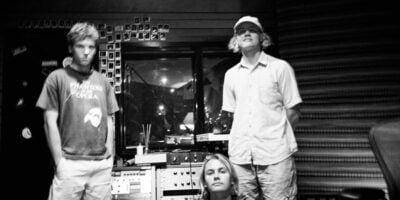Some of our earliest experiences with theatre and play are shadows cast on the wall, and the role that our hands play in the development of our imagination is an interesting concept. It almost feels like an unrecognised history – the ubiquity of hands sees them largely overlooked.
Kiss & Cry banishes that idea, simultaneously shooting and projecting onscreen the often startling beauty of hand-dancing in a performance that has received accolades across the globe. Reconnecting an audience with its creative lineage, however, was far from MichПle Anne De Mey’s thoughts when the troupe began rehearsing.
“We maybe thought of history,” De Mey explains, “but in fact when we [perform] we are not thinking about all that.” It must be said that while De Mey’s answers are colourful and considered, English is not exactly her forte. As such, her replies are often oddly poetic, but labyrinthine; never before in an interview have I felt so much like an empty-handed Theseus.
“It was a natural moment, and not thinking about [that] idea – we were all together satisfying what we [decided] to do together. It was more [an attempt to] create this long performance piece with hands. We didn’t know it was going to be a success, because it is very personal to create – we think, ‘This [idea may be] interesting.’ But after we think, ‘Yes, this is true,’ all the analysis [comes] afterwards. It was to totally create what we want and what the audience [will] enjoy watching. All sorts of needs [emerge] in making it, in the discovery, the effect of the characters. The poetic is important. [It] is not a dance made for movie, is not a movie made for dance, is not a text in a theatre. Everything was really created together, flow by flow.”
What first strikes you about the two performers in Kiss & Cry is the unexpected grace of these characters, and the fact that they are simply hands adds a level of familiar mystery that would not be out of place in a David Lynch film. It is certainly one of the most unique approaches to dance I’ve seen in some time, and the choreography is incredibly moving, almost haunting – taking something we assume familiarity with and revealing an alternate side.
“We [wanted to] create just a little theatre, [with a focus] on hands moving and dancing,” says De Mey. “Sometimes [the hands are a] character, sometimes animal, sometimes more abstract. Also, we try and go inside the [props], create inside [new spaces]. Sometimes the movement of the set [links] thematically to the story. Sometimes, it was anticipating the writer, [to] see what is difficult in the text. Sometimes, we take a song and choreograph in another language. Then we decide, ‘OK, [we have] the hands of a man and hands of a woman, it’s a love story.’ Then we have [projections] with the camera, the hall of memory. This [is the] challenge we created.”
Wrapping up this delightful but rather strange interview, De Mey elaborates on the genesis of the production. In the interest of providing an unabridged example of our conversation, the following is a wonderful, verbatim response.
“This hand-dancing will see the choreography of cameraman standing onstage, and after then, not recording images and to project at the same time on the screen. And then the dancers not in the life of the theatre, in the movie, on the camera. It’s not under spotlights, on the dance and on the theatre, and they really work together, collective. This is just the really beginning after the first.”
Beautiful, poetic, and bewildering. Much like Kiss & Cry itself.
Kiss & Cry as part of Sydney Festival 2015atCarriageworksplaying fromThursday January 22 until Sunday January 25, tickets online.


































